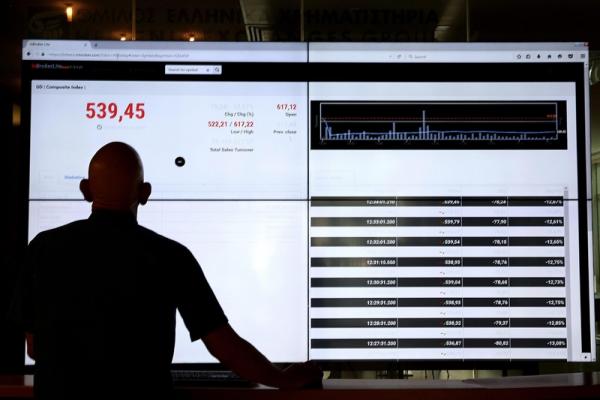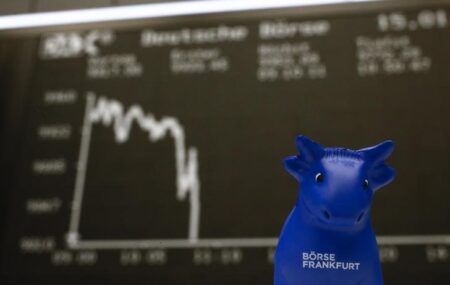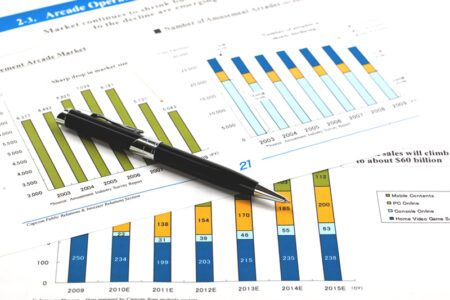Western Forest Products Inc. (WEF), a leading forest products company, reported a positive EBITDA of $9.4 million for the second quarter of 2024. Despite facing challenging market conditions, the company highlighted its strategic focus on execution and safety as key to its success.
It ended the quarter with strong liquidity and a healthy order file for Q3. Operational improvements and a commitment to strategic priorities were also cited as driving factors for the quarter’s results.
Key Takeaways
- Western Forest Products reported a positive EBITDA of $9.4 million for Q2 2024.
- The company’s strategic focus areas include execution, safety, and transitioning to higher-value products.
- New Saltair kiln dried 14.5 million board feet of lumber; two continuous kilns are planned for completion in 2025.
- Liquidity stood at approximately $142 million, with a net debt to cap ratio of 13%.
- Q3 order file is approximately 108 million board feet, despite potential impacts from weather and permit delays.
- The company is engaged in union negotiations and is optimistic about narrowing the valuation gap.
Company Outlook
- Western Forest Products is focusing on executing strategic priorities and maintaining a strong balance sheet.
- They are advancing pre-engineering and permitting for two continuous kilns, aiming for completion in 2025.
- The company is cautiously optimistic about its ability to narrow the valuation gap.
Bearish Highlights
- Harvest volumes in Q3 may be affected by hot, dry weather and permit delays.
- The company is cautious about tuck-in acquisitions due to the new credit agreement.
Bullish Highlights
- Improved stratification of specialty log sorts and operational uptime in manufacturing.
- Progress in growing strategic accounts and developing value-added products.
- Positive results from the engineered wood products segment.
Misses
- There were no specific misses mentioned in the earnings call summary.
Q&A Highlights
- Ongoing discussions on the manufacturing and Timberland side are being led by Jennifer.
- The company is not concerned about current log supply levels and does not expect any material impact from recent AAC reductions.
- Negotiations with the USW Union are specific to Western and are ongoing.
Western Forest Products Inc. has demonstrated resilience in a challenging market, attributing its positive quarterly results to a strategic focus on execution and safety.
The company’s improvements in Timberlands, manufacturing, sales, marketing, and engineered wood products have contributed to its success.
With a solid liquidity position and a disciplined approach to operations and growth, Western Forest Products is poised to navigate future market conditions while focusing on its strategic priorities. The next earnings call is scheduled for November, where further updates on the company’s progress and discussions will be provided.
InvestingPro Insights
Western Forest Products Inc. (WFSTF) has shown a capacity to manage through tough market conditions, as evidenced by their recent positive EBITDA report for Q2 2024. Delving into the financial health and market performance of the company, InvestingPro provides additional context.
InvestingPro Data highlights a market capitalization of $93.61 million, reflecting the company’s size in the market. A notable Price / Book ratio of 0.23 for the last twelve months as of Q2 2024, suggests that the stock may be undervalued relative to its assets. This aligns with the InvestingPro Tip that the company is trading at a low Price / Book multiple. Additionally, the dividend yield stands at a significant 12.22%, indicating the company’s commitment to returning value to its shareholders.
In terms of performance metrics, the revenue has seen a decline of 13.49% over the last twelve months as of Q2 2024, which could signal challenges in the company’s top-line growth. Moreover, the gross profit margin is at 6.17%, which corroborates the InvestingPro Tip that the company suffers from weak gross profit margins.
InvestingPro Tips further reveal that analysts are not optimistic about the company’s profitability in the near term, with two analysts having revised their earnings downwards for the upcoming period. This caution is reflected in the stock’s performance, with a significant price drop of over 60% in the past year.
For investors looking for a deeper dive into Western Forest Products Inc., there are additional InvestingPro Tips available. These insights could provide a more comprehensive view of the company’s financial health and market prospects, which could be crucial for making informed investment decisions.
Full transcript – Western Fst Prods (WFSTF) Q2 2024:
Operator: Good morning, ladies and gentlemen. Welcome to Western Forest Products’ Second Quarter 2024 Results Conference Call. During this conference call, Western’s representatives may make forward-looking statements within the meaning of applicable securities laws. These statements can be identified by words like anticipate, plan, estimate, will and other references to future periods. Although these forward-looking statements reflect management’s reasonable beliefs, expectations and assumptions, they are subject to inherent uncertainties and actual results may differ materially. There are many factors that could cause actual outcomes to be different, including those factors described under Risks and Uncertainties in the company’s annual MD&A, which can be accessed on SEDAR and is supplemented by the company’s quarterly MD&A. Forward-looking statements are based only on information currently available to Western and speak only as of the date on which they are made. Except as required by law, Western undertakes no obligation to update forward-looking statements. Accordingly, listeners should exercise caution in relying upon forward-looking statement. I would now like to turn the meeting over to Mr. Steven Hofer, President and CEO of Western Forest Products. Mr. Hofer, please go ahead.
Steven Hofer: Thank you, Patrick, and good morning, everyone. I would like to welcome you to Western Forest Products’ 2024 second quarter conference call. Joining me on the call today, Glenn Nontell, our new Chief Financial Officer; Steve Williams, our Executive Vice President; and Bruce Alexander, our Senior Vice President, Sales, Marketing and Manufacturing. We issued our 2024 second quarter results yesterday, which included the announcement that Glen Nontell will be our next CFO. In deciding who should fill the role of CFO, we looked both internally and externally. We wanted someone with the right mix of leadership, industry experience and technical skills to help navigate through near term macroeconomic conditions and advance our strategic priorities. Glen’s financial acumen, forward-thinking and laser focus on execution made him a clear choice from a number of strong candidates and speaks to the strength of the internal talent at Western. Steve Williams will remain in the role of Executive Vice President until his previously communicated retirement date of December 31, 2024. We look forward to benefiting from Steve’s advice and judgment as he moves to an advisory role thereafter. Turning to our second quarter financial results, we successfully navigated through more challenging market conditions to return our business to positive EBITDA in the second quarter, generating $9.4 million. This was the result of a huge effort across all of our operating divisions and driven by a focused effort on execution and safety. In Timberlands, despite facing ongoing harvesting and permitting delays, we continue to improve the stratification of our specialty log search — log sorts such as Paul and peeler logs to support incremental margin. In manufacturing, our continued focus on operational uptime and reliability supported improved results despite tight log supply at certain facilities. In sales and marketing, we continue to make progress growing key strategic accounts while developing value added products and programs targeted with the end user in mind. In engineered wood products, we delivered another quarter of positive EBITDA despite labor and land stock availability challenges. In addition, we remain focused on accelerating our transition to higher value products. Our new Saltair kiln dried 14.5 million board feet of lumber in the second quarter. It is achieving our uptime production and value performance targets. We also continue to advance pre-engineering and permitting related to our our two previously announced continuous kilns. Each kiln will have a capacity of approximately 70 million board feet and are expected to be completed in 2025. Continued focus on safety and maintaining a strong balance sheet while advancing our key strategic priorities remains our key focus in the near term. I will now turn it over to Glen to review our key financial results.
Glen Nontell: Thanks, Stephen. Second quarter adjusted EBITDA was $9.4 million as compared to negative $12 million in the same period last year. As compared to the prior year, results in the second quarter benefited from higher lumber shipments, higher domestic log prices and a stronger log sales mix and lower stumpage and freight expenses. This was partially offset by a slightly weaker lumber specialty sales mix and higher timberlands and secondary processing costs. We closed the second quarter with approximately 75 million board feet of lumber inventory and 777,000 cubic meters of log inventories. Turning to CapEx and cash flow, our revised 2024 total CapEx spending is now expected to be approximately $40 million. This reflects the expectation that the majority of the $35 million were related to two new continuous kilns will be incurred in 2025. After the end of the second quarter, we received our income tax refund of approximately $23 million, which was utilized to reduce debt. From a balance sheet perspective, we ended the second quarter with liquidity of approximately $142 million and a net debt to cap ratio of 13%. Last week, we amended and extended our credit facility to July 2026. At the end of June, we had approximately $236 million in duties on deposit, which equates to approximately $0.54 per share after-tax. Turning to third quarter seasonality, typical third quarter can be challenging operationally as hot dry weather can restrict logging activity, reduce harvest volumes and impact cost. While we have yet to experience any significant forest fires in our area of operation, hotter and drier conditions, combined with harvest permit delays may impact harvest volumes through the summer. We will continue to manage our manufacturing operating schedules to match production to market demand and available log supply. Stephen, that concludes my remarks.
Steven Hofer: Thanks, Glenn. Turning to our market outlook, Cedar demand and prices for timber and premium appearance products are expected to remain stable. Demand and price for Cedar decking have firmed up while senior term products are expected to remain soft for the balance of the year. In Japan, weakness in wooden home starts well-stocked inventories and a weaker Japanese yen to the U.S. dollar exchange rates are anticipated to impact lumber demand and prices in the near term. Demand for our industrial products are generally expected to remain stable. For commodity lumber, North American demand and prices are expected to remain volatile, while in China, near term lumber demand and prices are expected to be seasonally weaker. Overall, we currently have a third-quarter order file vote of approximately 108 million board feet. Looking ahead, we remain focused on building our profitable quarter while executing on our strategic priorities and maintaining a strong balance sheet. With that, operator, we can open the call up to questions.
Operator: [Operator Instructions]. First question is from Ben Isaacson from Scotiabank. Please go ahead.
Ben Isaacson: Good morning, everyone, and thank you for taking my call. First, congrats to see — very good to see the positive EBITDA this quarter. My first question is for Glenn. Congrats on the appointment to CFO. Can you talk a little bit about your vision for the role and any kind of wholesale or — any wholesale changes that you want to make? Thank you.
Glen Nontell: Thanks, Ben. I appreciate the comment. I think what I’d say is from a strategy perspective, we have a very well-defined strategy and none of that is changing for the company. Very high focus around operational execution, focus on our first station partnerships, continually growing the business when the balance sheet warrants silver. There’s definitely no change from a strategy perspective. I think what I hope to bring to the role. And I know that I’m only one person in this broader organization that is important to success of the business. But in my term, in my prior roles that I’ve been at before, Western, there’s been a very high degree on execution and expediting our execution. So what I hope to bring to this is you know, continue to executing on our strategic priorities, but bring sort of a faster cadence of getting it — getting on with some of the priorities that we set.
Ben Isaacson: That’s great. And then just as a follow-up question, can you guys just talk a little bit about where you are in terms of the overall capacity utilization rate? And how should we think about that rate through the back half of ’24 and into ’25? Thank you.
Steven Hofer: Yes, I can maybe, can comment on that, Ben. You know currently, what we’re doing is being very disciplined in matching our operating rates relative to demand across all of our global markets. And that’s overlaid against the overall log supply. As you know, we have kind of three categories of fiber and small diameter chip and saw kind of the medium size, gang log and then the large diameter head rig log. And so each of those sorts have different challenges when it comes to cutting permits and couple blocks, but we’ll be pretty disciplined just like we’ve shown over the last year and half around making sure that our inventory levels are in balance overall on a match of capacity relative to lumber demand. So don’t expect much material change here for the balance of the year relative to what we’ve been focused on for the first half.
Operator: Thank you. The next question is from Sean Steuart. Please go ahead.
Sean Steuart: Thanks. Good morning, everyone. One following question from Ben. Seems like a big part of the success story in the second quarter was you guys were able to drive down your finished good inventories quite a bit, and that’s been the trend for most of the past couple of years. I guess in terms of gauging sustainability of this momentum, can you comment on further room to lower finished goods inventories at this point? Are you tapped out on that front?
Glen Nontell: Well, Sean, thanks for the question. Our focus is really around ensuring that we have an order file that matches production. So I come from a bit of the background of everything that you make every day you want to sell every day, and kind of have a 30 to 45 days worth of inventory at the max. And so we’ve had some challenges historically on overall, because of the lack of kiln dried capacity having to take a lot of our volume outside that needs to be kiln dried, and by definition, that provides a bit more complexity as well as having to hold a bit higher levels of inventory. But our focus is really to continue to draw that down. And we have some pretty aggressive targets here and in Q3 that we continue to be focused on. So we’re not done yet.
Sean Steuart: Okay. That’s good to hear. And Stephen, any comments you can give with respect to negotiations with the union and towards a new contract?
Steven Hofer: Sure. I’ll make a few general comments. We commenced negotiations in April and those continue today. The current agreement expired in mid June. So the prior collective agreement continues to apply as negotiations continue. We’re committed to delivering a fair and balanced agreement that recognizes our employees’ contributions while also ensuring our long-term competitiveness as a company. USW members represent about 1,000 of our team members as well as additional members within our Timberland contractors. So there’s some ongoing discussions today, both on the manufacturing side and on the Timberland side, and I continue to be optimistic. We’ve committed to these discussions and they’re being led by Jennifer. And so far, I think we’re we’re making good progress and we’ll keep everyone posted on those discussions.
Sean Steuart: Thanks for that detail. Last one, Steven. Bigger-picture question, you guys have underperformed comps both from a share price and valuation perspective the last couple of years. Aside from the discretionary CapEx plan, restructuring initiatives, have you or the Boards considered bigger-picture strategic initiatives to narrow the valuation gap? How much does that occupies your headspace really I guess is the question.
Stephen Williams: Yes, it’s a significant component of what I focus on every day and the discussions I have with our Board. Our view is that we have a very clear, concise strategic plan. It has five key strategic priorities. And I think we’ve communicated those publicly in previous calls, and we can certainly do that directly with you, Sean, as well on a on a subsequent call. But we remain optimistic around our ability to execute the strategic plan and that involves getting our business that we currently have running better from overall reliability and uptime. It involves monetization of some of the tenures and we’ve shown that we can execute on those, and we’re going to continue to focus on those areas. We talked a bit about growth in the engineered wood business, and we’re making some progress organically with the Calvert acquisition. We’re very careful on what we’re prepared to bite off, though, for tuck-in acquisitions, this relative to the balance sheet, we have a new credit agreement that Steve and Glen was successful in putting in place, and we just want to be mindful of that. You know that that’s an important piece of our business is the overall integrity of that balance sheet. So I continue to be focused on our strategic priorities. And our team is very much focused on the operational execution piece of the business every day. So that’s what I would say about that.
Operator: Thank you. The next question is from Matthew McKellar. Please go ahead.
Matthew McKellar: You called a tight log supplies factor in Q2. And with that, I was wondering if you could provide just a bit more color on the warm weather and the impact on harvest levels you spoke to earlier in the call, do you need to catch up to the balance of the quarter based on harvest volumes over the last couple of months to maintain production at the level you’d like or are you more calling out today? Whether there is a risk factor as the summer progresses.
Steven Hofer: Thanks, Matt. Appreciate the question. I would say that when we look at our Q3 forecast, we will have an increase in our log volume in Q3 here. And I’m not — even though we — we ended the quarter at 770,000 cubic meters. You know, I’m not overly concerned about that level. I think our team is also showing to ourselves that the days of having 1.5 to 2 million cubic meters of log inventory are probably not needed. And when you look at the operating platform, we have our ability to execute on the timberland side very, very effectively. I don’t anticipate us going back to the era of a million cubic meters of log inventory. So is 777 a little light, maybe on a couple of sorts, but you can kind of see the results of the focus on timberlands with respect to strategy allocation and different log sorts as well. And we’re really focused on the margin opportunity on what logs or should we do on every couple block that is going to generate the highest margin for Western and our new financial partners on some of the partnerships that we have in place. So that’s what I would share as far as our go-forward log inventory strategy.
Matthew McKellar: Okay. Thanks very much. Next, the recognizing the apportionment hasn’t been completed yet, do you expect any impact to your business from the recent reduction to AAC in the North Island timber supply area, how should we think about the range of outcomes here?
Steven Hofer: Yes, I don’t think you’ll see any material change. Those are really — those numbers are really catching up to the current reality that we’ve been operating under for the last number of years. So you won’t see any material change in the actual volume that we’re harvesting those are kind of indicative of what we’ve been faced with.
Matthew McKellar: Okay. Thanks very much. And just one last clarifying question on the possibility to follow-up on Sean’s question around the Union, are you able to arrive at a resolution with the USW Union as a company independently? Or do you need a broader resolution and includes more of the coastal forest products industry.
Glen Nontell: No, this is a specific negotiation between Western and the USW.
Operator: Thank you. There are no further questions at this time. I would like to turn the meeting back over to Mr. Hofer.
Steven Hofer: Okay. Well, thanks, everyone, for joining our call today. We appreciate your interest in our company and look forward to our next call in November.
Operator: Thank you. The conference has now ended. Please disconnect your lines at this time, and thank you for your participation.
This article was generated with the support of AI and reviewed by an editor. For more information see our T&C.
Read the full article here
















